It often starts with slight pain or a tweak on a rep. Then with every repetition or workout the pain gets stronger and your lifts get weaker. Eventually you start feeling pain with everyday activities like getting out of the car or after a nights sleep, until you reach a point where you feel like one wrong movement will cause your back to explode. Sound familiar or heard something similar from a friend? Tiger Woods showed that even a great athlete whose body can’t handle the demands of their sport can do it with risk, and still get injured, just like a beginner stepping foot inside a weight room or CrossFit gym for the first time.

More often than not however, lower back pain begins without a specific identifiable cause. This means that you are doing something (or many things) day in and day out that are either making your pain worse, or preventing from getting better. If you don’t change your routines, the pain will eventually come back. Back pain is super common for a number of different reasons, but in order to truly get rid of it once and for all…. without it coming back down the road…. the key is to treat the underlying root cause.
I’ve had the distinct honor of working with a wide variety of patients with lower back issues. Some fresh out of surgery, some with congenital abnormalities they were born with, and others with standard lower back pain. My rare blend of residency and fellowship training along with many years experience as a Sports Doctor have taught me what works and what doesn’t. Today I want to give you some insight as to why lower back pain is so common, as well as provide practical advice and tips on how to reduce your back pain and prevent it from returning or happening in the first place.
Reason 1 – Poor Sleep Quality and Quantity
Adequate sleep is not only a key part of a healthy lifestyle but a critical component to a healthy back. We spend 7-8 hours (hopefully) each night sleeping and recovering. Key word – recovering. Many important processes take place within the body during these critical hours. Most importantly, this is the time when your body heals. When it comes to lower back pain, it’s not just that quantity of sleep that’s critical, but the position you are in as well. If you sleep in a poor position, your back will not only fail to heal and recover, but it may even get worse.

WHAT TO DO ABOUT IT – Stay out of the bad positions and get into the right one.
Positions to avoid: Stomach or side-lying mountain climber (on side with top knee touching mattress)
Positions to shoot for: Lying on your back with pillows (2-3) under your knees or on either side with a pillow between your knees
Reason 2 – Sitting For Too Long
Sitting for prolonged periods can be a major contributor to lower back pain. People will often sit for long hours at work, go immediately to the gym for a workout, and then hit the couch for monday night football or their favorite netflix show. Unfortunately I hear this story far to often. Long periods of sitting can cause some major imbalances within the body, causing certain muscles to tighten up and others to weaken, which can lead to poor movement patterns and ultimately lower back pain.

WHAT TO DO ABOUT IT – Get moving!
The most important thing to do if you find yourself sitting or driving for long periods is to take more breaks and move around. A general rule is to not allow yourself to sit for more than an hour at a time, however if symptoms come on before then, try to move around before pain sets in. If able, I also recommend an adjustable stand-up desk. This simple change can have a large impact on the health of your back and in most cases is well worth the investment.
Reason 3 – You Have Tight Hip Flexors
Poor movement patterns, extended periods of sitting, poor sleeping positions, and weak core and hip muscles can all contribute to tight hip flexors (also known as the iliopsoas). The iliopsoas actually combines two muscles (the psoas and iliacus) which run from in the hip, attach to the pelvis, and insert deep to each of the lumbar spine segments. When this muscle is tight it will literally tug and pull on the lumbar spine, greatly increasing compensatory movement patterns and the chance of lower back pain.
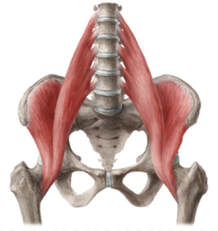
| WHAT TO DO ABOUT IT – Perform a hip flexor self release The most efficient way to safely improve psoas flexibility is to perform a self release rather than a static stretch. Lie on your back with knee bent/ foot flat on side you want to address. With your fingers, find the top of your pelvic bone known as the iliac crest and move ~ 2 inches towards midline. Take a light kettlebell or PVC pipe (that’s right) and apply deep pressure at the targeted area. Hold for 2-3 minutes. You can move the KB or PVC pipe slightly to find the “tightest” or most tender point. To increase the intensity, extend and flex the leg several times while under tension. |
Reason 4 – Ineffective Warm-Up
It’s safe to say that why this happens is pretty self explanatory. After sitting all day, you rush to get to the gym, arrive right on time or even a little late, and jump right into the workout. Or, you are just flat out lazy and skip the warm-up. With this approach you’re asking for injury, and if it hasn’t happened yet, it will in the near future.
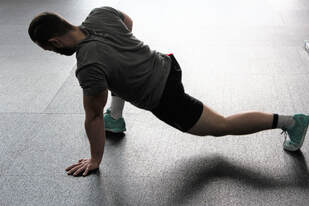
WHAT TO DO ABOUT IT – Follow these 3 steps
While this concept applies to all areas of the body, it is especially important to allow the lower back to safely perform demanding CrossFit and weightlifting movements under fatigue. Every warm up should consist of the following 3 steps:1) Get your heart rate up – It doesn’t matter much how you do it, but try to relate towards that day’s workout. Example: 5 minutes of jogging, biking, rowing, elliptical, or ski erg.
2) Improve specific mobility needs – Include movements and exercises to improve joint mobility and muscle flexibility as it relates to your workout and your specific limitations. Example: mobilize your mid/upper back to prepare for overhead shoulder work.
3) Prime the muscles – Include exercises that prepare the muscles to perform that day’s specific workout. Example: Perform PVC pipe overhead squats to prepare to snatch.
Reason 5 – You Continue To Aggravate It
Every time you go into a deep squat or every time you perform a power clean, you feel that sharp lower back pain, yet you continue to force your way through it. This can be go on for days or even years. Pain is signal from your nervous system conveying a warning or that something incorrect is happening. Often this is movement related. Continuously putting your body through these painful movements not only feels awful but is delaying your recovery, and potentially feeding into the underlying problem.
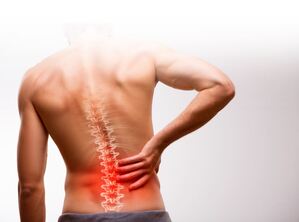
WHAT TO DO ABOUT IT – Listen to your body and adjust accordingly
You only get one body and you need to take care of it. Think of it like your dream car. If the check engine light comes on, you take to the shop. Why? Because you don’t want it to fail on you while on the road. Same thing with your body. If you feel repetitive tweaks, unusual tightness, or continued pain you shouldn’t continue to work through it. You need to address the issue before it keeps you out of the box for a lengthy period. Now i’m not suggesting you take extended time off, I’m recommending that you listen to your body and make the necessary adjustments until you address the underlying reason your pain keeps coming back. The last thing you want to do is rest completely, as this has been found to actually make things worse.
Reason 6 – You Lack Core Stability
Six pack = strong, stable core right? Not necessarily. There is a big difference between core strength and core stability. Working on your six-pack abs will not help your training if your core is not stable and functional. A core with poor stability is a leading cause of lower back pain. Even some of the highest level athletes like Gronk and Tony Romo can have back pain. Why? These athletes likely lacked the stability necessary for demands in their respective sports. When you lack stability from your active systems (i.e. muscles), increased demand gets put on your passive systems (i.e. joints, ligaments), which can lead to pain. Often, a gym’s programing includes too high an emphasis on the “ego” lifts and not enough attention towards core stabilization and midline control, or the athlete without back pain is to lazy to perform the “boring” but necessary accessory work.
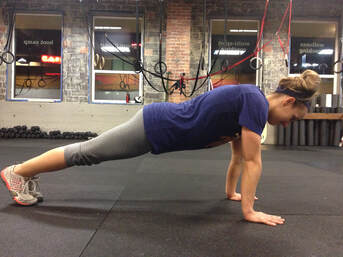
WHAT TO DO ABOUT IT – Train your core to do what it’s meant to do: Stabilize
The core is designed to prevent motion, not create motion, meaning exercises such as crunches, sit-ups, and medicine ball russian twists train the core to do something it’s not meant to do. These exercises improve core strength, not stability. It is more appropriate to include exercises that prevent spinal motion such as planks, farmer’s carries, and the pallof press series. Core stability is essential in maintaining a neutral spine and pelvis, and should be part of every athlete’s training program, from weekend warriors to professional athletes.
Reason 7 – You Lift With Your Back
You start a grueling metcon or set out to hit a big PR. Then you start to fatigue or attempt to lift to heavy and technique breaks down, greatly increasing your chance of lower back pain. Losing a “neutral” lumbar spine (excessive lumbar extension or lumbar flexion) during a fatiguing metcon or during a big “ego” lift is one of the most common mechanisms of injury for the lower back. However, even more common, is when an athlete falls into the pattern of simply “using your back” to not only perform basic, lighter-weight lifts, but with all daily activities like getting out of a chair or picking up something off the floor. You don’t have to be a new athlete to experience a painful lower back. At some point in life, nearly everyone will struggle with it. In fact, about 80% of Americans will experience low back pain at some point in their life and nearly a quarter of the population will experience it on any given day.
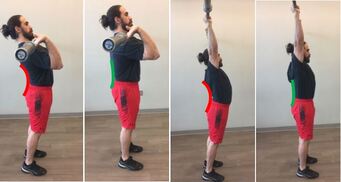
WHAT TO DO ABOUT IT – Understand Lumbar Neutral
Proper lifting technique under fatigue or during big lifts can be complex. The take home message is that you need to maintain “lumbar neutral.” This is basically the middle ground between over-arching (aka lumbar extension) and over-slouching/ rounding (aka lumbar flexion) of the lower back. When we lose this middle ground, we run into trouble. It is extremely important to not only apply the neutral spine concept to exercise-related movements, but also with all your daily activities (ex: long periods of sitting, putting something heavy on the top shelf, doing your laundry).
Final Word..If you’ve experienced back pain you’re not alone. Implement these strategies and tips as soon as you can to help get you down the right path. If you have any concerns, feel like something isn’t right, or just want to get better as fast as possible, call a Sports Physical Therapist today! Our profession is armed with years of extensive knowledge and training and we specialize in getting athletes like you back to your sport without pain or limitations. We provide solutions to specific problems. As an athlete myself, I take pride in understanding the mindset and demands of athletes. If you are struggling with lower back pain, hit the button below.
Thanks for reading,
Dr. Andrew


2 Responses
I need help recovering from a pars defect in my lower back. How should i return to excersising and lifting heavy?
Hey Eran! Sorry for the delay, i’m just seeing this now. That are a number of factors that paly into this, and transitioning back to lifting heavy needs to be very individualized. We would be happy to help you, just sign up for a free phone consult on our website!